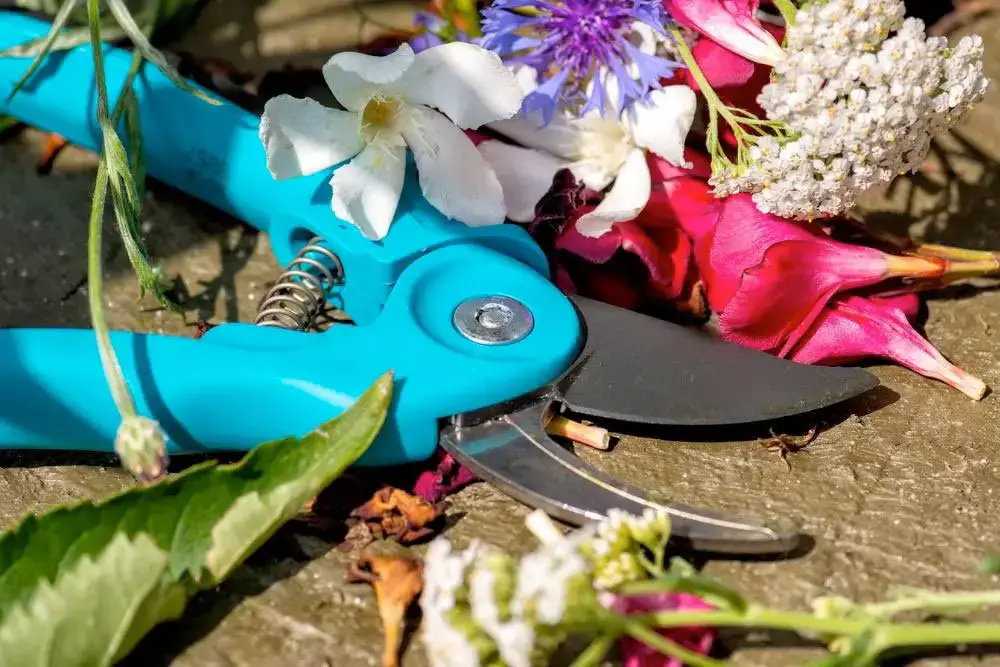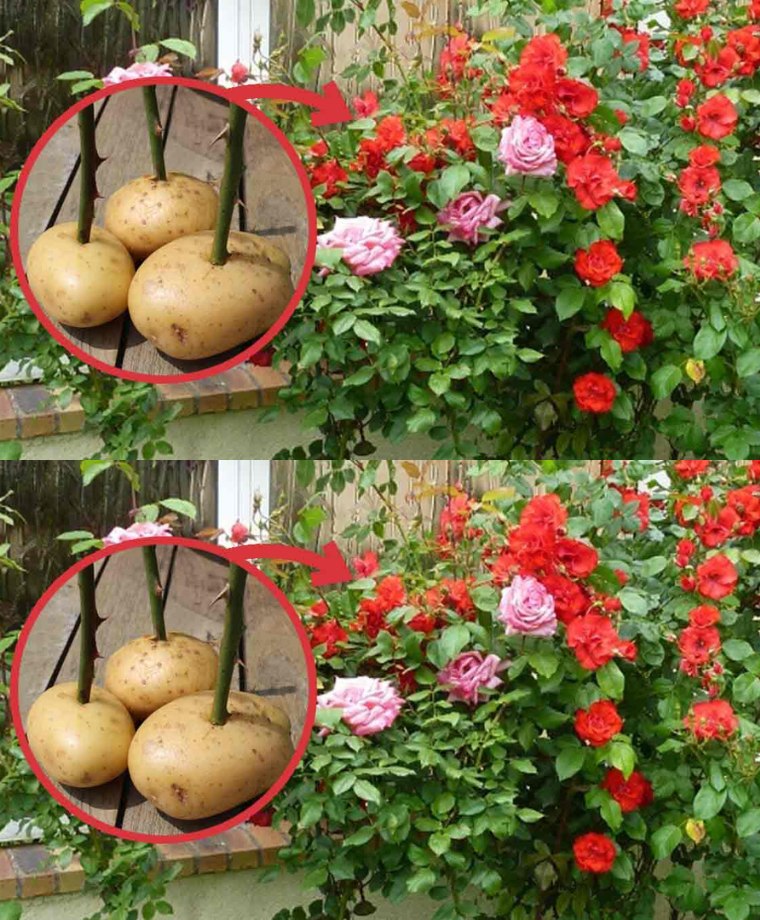If you’re eager to embark on a gardening journey but hesitant about investing in specialized equipment or seed-starting resources, fear not! Creating a stunning rose garden doesn’t have to break the bank. In fact, there’s a fun and alternative method to propagate rose cuttings using potatoes. With just a few simple materials and a dash of patience, you can turn your gardening dreams into reality.
Ready to infuse your life with some greenery? Let’s explore how to grow roses in potatoes and discover the satisfaction of nurturing your very own blossoming garden!
What You’ll Need:

To successfully grow rose cuttings in potatoes, gather the following supplies:
- Rose cuttings, approximately 6 to 8 inches long
- Jars
- Labels
- Clean pruning shears
- Rooting hormone
- Red or white potatoes (large enough to accommodate 1/2 inch of a rose stem)
- Drill or screwdriver
- Large 5-gallon pot (optional)
Step-by-Step Guide on Growing Rose Cuttings in Potatoes:
Growing rose cuttings in potatoes is a simple and enjoyable method that sets the stage for an enchanting collection of rose bushes in your backyard. Follow these steps to bring your vision to life:
Step 1 – Cut the Stems:

Begin by selecting two or three of the healthiest and longest stems from a rose bush. You can acquire cuttings from a florist or kindly request them from a neighbor. Trim the stems to be approximately 6 to 8 inches long, removing any leaves from the bottom half. Place the stems in clean jars filled with water to keep them hydrated while you prepare the potatoes for planting. To differentiate between different types of roses, label each jar accordingly. Once your stem cuttings are prepared, proceed to step two.
Step 2 – Cutting and Rooting Hormone:

With your rose cuttings ready, it’s time to make precise cuts. Trim approximately half an inch from the bottom of each rose cutting. Next, gently score the sides of the cane (rose stem) near the bottom to remove a small outer layer, allowing the rooting hormone to adhere more effectively. Finally, dip the end of the cutting into the rooting hormone compound. This boost of hormone ensures successful rooting and establishment in their new potato homes.
Now that you’ve completed these steps, it’s time to move on to planting them in their potato beds.
Step 3 – Insert Into Potato:

Prepare the potato for your rose cutting by using a screwdriver or drill bit slightly smaller than the diameter of the stem. Pierce the center of the potato with the tool. Carefully place the prepared rose cutting into the hole, ensuring it fits snugly but not completely through the potato.
Step 4 – Planting and Care Tips:

With the rose cutting securely nestled in the potato, it’s time to proceed with planting. Plant the potato in the soil, ensuring it is at least 3 inches deep. Gently tamp the soil around the potato to secure it in place. To provide protection from extreme temperatures and maintain the necessary humidity, place a jar over the planted cutting. Keep the cover in place until the roots have taken hold.
Monitor soil moisture, ensuring it remains adequately hydrated without drying out too quickly. If you have limited garden space, consider planting your cuttings in a 5-gallon pot and covering it with a plastic bag.
Regularly water your rose cuttings and observe for signs of growth. Within approximately a month, your roses will establish roots, signaling successful propagation.
Pros and Cons of the Potato Method:

Growing rose cuttings in potatoes is an intriguing and unconventional approach with its own advantages and considerations.
Pros:
- The potato provides moisture, which is beneficial for the rose cutting’s root development, particularly during dry or arid conditions.
- Potatoes are readily available and cost-effective, offering savings on gardening expenses.
- Nutrients from the nutrient-rich soil surrounding the potato are absorbed by the potato and subsequently transferred to the cutting’s developing roots, ensuring adequate nutrition.
Cons:
- There is a risk of sprouting or rotting potatoes if planted, making this method less reliable.
- Excessive moisture in and around the potato while submerged in the ground can lead to rotting. This may attract animals, posing a threat to the cuttings.
- If you adequately hydrate the soil during planting and reside in a moderate climate, the potato method may be unnecessary.
Potatoes Can Cultivate Beautiful Blooms:
And there you have it! A straightforward approach to growing roses from cuttings using potatoes. Pay close attention to the details and closely monitor the progress of your plants. Soon enough, you’ll be rewarded with healthy and magnificent roses blooming in all their glory.
Now that you’ve acquired this new skill, showcase it proudly! Share this valuable information with your family and friends. If you have any questions, feel free to leave them in the comments below. Thank you for reading, and may your gardening endeavors be filled with joy and success!
